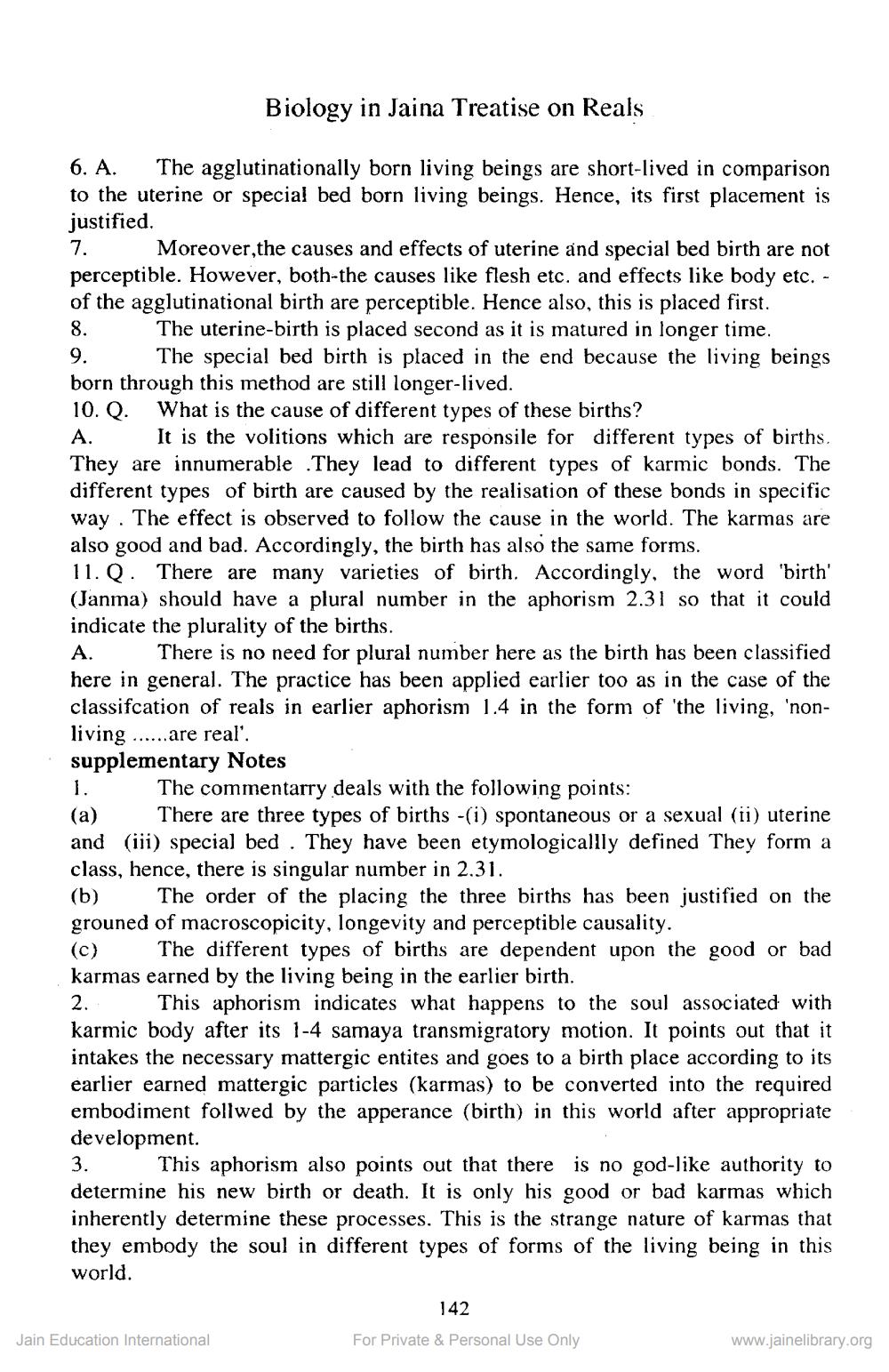________________
Biology in Jaina Treatise on Reals
8.
6. A. The agglutinationally born living beings are short-lived in comparison to the uterine or special bed born living beings. Hence, its first placement is justified. 7. Moreover, the causes and effects of uterine and special bed birth are not perceptible. However, both-the causes like flesh etc. and effects like body etc. - of the agglutinational birth are perceptible. Hence also, this is placed first.
The uterine-birth is placed second as it is matured in longer time. 9. The special bed birth is placed in the end because the living beings born through this method are still longer-lived. 10. Q. What is the cause of different types of these births? A. It is the volitions which are responsile for different types of births, They are innumerable .They lead to different types of karmic bonds. The different types of birth are caused by the realisation of these bonds in specific way. The effect is observed to follow the cause in the world. The karmas are also good and bad. Accordingly, the birth has also the same forms. 11. Q. There are many varieties of birth. Accordingly, the word 'birth' (Janma) should have a plural number in the aphorism 2.31 so that it could indicate the plurality of the births. A. There is no need for plural number here as the birth has been classified here in general. The practice has been applied earlier too as in the case of the classifcation of reals in earlier aphorism 1.4 in the form of the living, 'nonliving ......are real'. supplementary Notes
The commentarry deals with the following points: (a) There are three types of births -(i) spontaneous or a sexual (ii) uterine and (iii) special bed. They have been etymologicallly defined They form a class, hence, there is singular number in 2.31. (b) The order of the placing the three births has been justified on the grouned of macroscopicity, longevity and perceptible causality. (c) The different types of births are dependent upon the good or bad karmas earned by the living being in the earlier birth.
This aphorism indicates what happens to the soul associated with karmic body after its 1-4 samaya transmigratory motion. It points out that it intakes the necessary mattergic entites and goes to a birth place according to its earlier earned mattergic particles (karmas) to be converted into the required embodiment follwed by the apperance (birth) in this world after appropriate development. 3. This aphorism also points out that there is no god-like authority to determine his new birth or death. It is only his good or bad karmas which inherently determine these processes. This is the strange nature of karmas that they embody the soul in different types of forms of the living being in this world.
142
Jain Education International
For Private & Personal Use Only
www.jainelibrary.org




